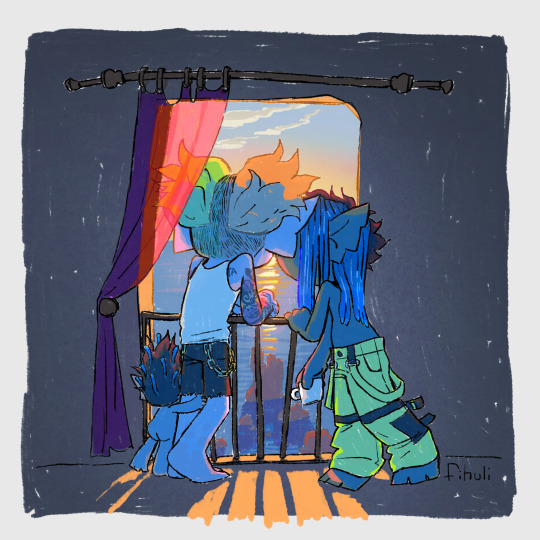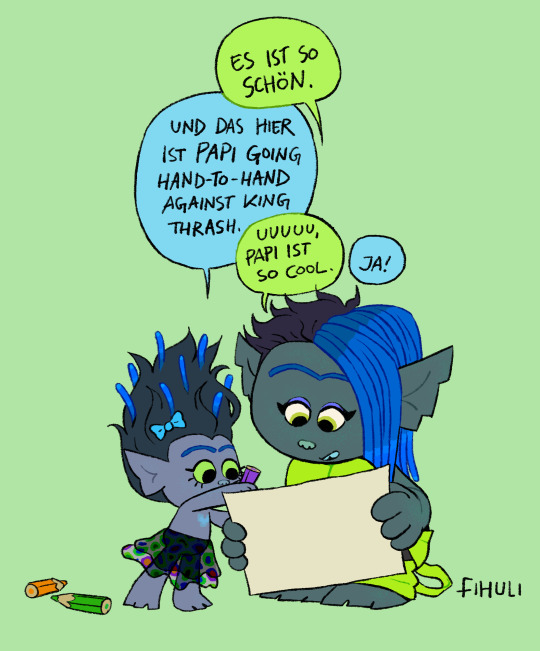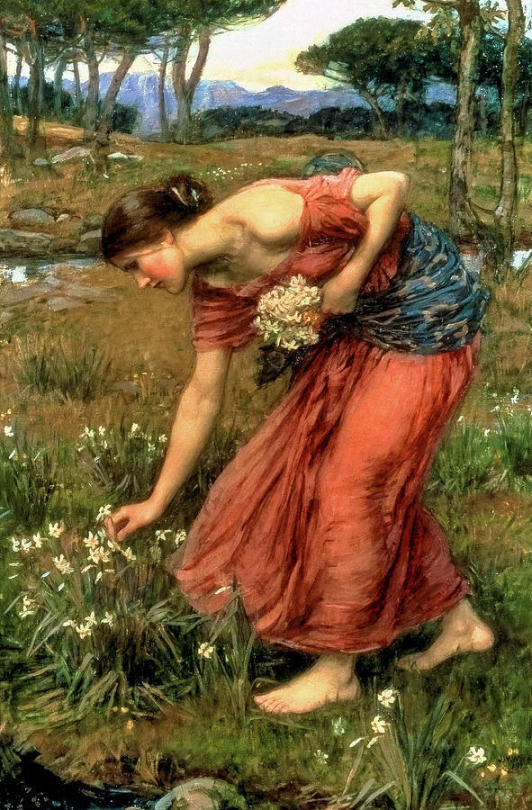#european styling
Explore tagged Tumblr posts
Text
It’s an open secret in fashion. Unsold inventory goes to the incinerator; excess handbags are slashed so they can’t be resold; perfectly usable products are sent to the landfill to avoid discounts and flash sales. The European Union wants to put an end to these unsustainable practices. On Monday, [December 4, 2023], it banned the destruction of unsold textiles and footwear.
“It is time to end the model of ‘take, make, dispose’ that is so harmful to our planet, our health and our economy,” MEP Alessandra Moretti said in a statement. “Banning the destruction of unsold textiles and footwear will contribute to a shift in the way fast fashion manufacturers produce their goods.”
This comes as part of a broader push to tighten sustainable fashion legislation, with new policies around ecodesign, greenwashing and textile waste phasing in over the next few years. The ban on destroying unsold goods will be among the longer lead times: large businesses have two years to comply, and SMEs have been granted up to six years. It’s not yet clear on whether the ban applies to companies headquartered in the EU, or any that operate there, as well as how this ban might impact regions outside of Europe.
For many, this is a welcome decision that indirectly tackles the controversial topics of overproduction and degrowth. Policymakers may not be directly telling brands to produce less, or placing limits on how many units they can make each year, but they are penalising those overproducing, which is a step in the right direction, says Eco-Age sustainability consultant Philippa Grogan. “This has been a dirty secret of the fashion industry for so long. The ban won’t end overproduction on its own, but hopefully it will compel brands to be better organised, more responsible and less greedy.”
Clarifications to come
There are some kinks to iron out, says Scott Lipinski, CEO of Fashion Council Germany and the European Fashion Alliance (EFA). The EFA is calling on the EU to clarify what it means by both “unsold goods” and “destruction”. Unsold goods, to the EFA, mean they are fit for consumption or sale (excluding counterfeits, samples or prototypes)...
The question of what happens to these unsold goods if they are not destroyed is yet to be answered. “Will they be shipped around the world? Will they be reused as deadstock or shredded and downcycled? Will outlet stores have an abundance of stock to sell?” asks Grogan.
Large companies will also have to disclose how many unsold consumer products they discard each year and why, a rule the EU is hoping will curb overproduction and destruction...
Could this shift supply chains?
For Dio Kurazawa, founder of sustainable fashion consultancy The Bear Scouts, this is an opportunity for brands to increase supply chain agility and wean themselves off the wholesale model so many rely on. “This is the time to get behind innovations like pre-order and on-demand manufacturing,” he says. “It’s a chance for brands to play with AI to understand the future of forecasting. Technology can help brands be more intentional with what they make, so they have less unsold goods in the first place.”
Grogan is equally optimistic about what this could mean for sustainable fashion in general. “It’s great to see that this is more ambitious than the EU’s original proposal and that it specifically calls out textiles. It demonstrates a willingness from policymakers to create a more robust system,” she says. “Banning the destruction of unsold goods might make brands rethink their production models and possibly better forecast their collections.”
One of the outstanding questions is over enforcement. Time and again, brands have used the lack of supply chain transparency in fashion as an excuse for bad behaviour. Part of the challenge with the EU’s new ban will be proving that brands are destroying unsold goods, not to mention how they’re doing it and to what extent, says Kurazawa. “Someone obviously knows what is happening and where, but will the EU?”"
-via British Vogue, December 7, 2023
#fashion#slow fashion#style#european union#eu#eu news#eu politics#sustainability#upcycle#reuse#reduce reuse recycle#ecofriendly#fashion brands#fashion trends#waste#sustainable fashion#sustainable living#eco friendly#good news#hope
10K notes
·
View notes
Text

The Fireplace, 1994
#vintage#interior design#home#vintage interior#architecture#home decor#style#1990s#living room#90s#fireplace#carved#stone#beamed ceiling#hearth#slate#andirons#pottery#antique#clock#European#cottage
1K notes
·
View notes
Text

#postsss#fotosss#cooking#kitchen#modern kitchen#European kitchen#interior#interior design#pasta#food#foodporn#curly hair#baggy jeans#gold jewelry#streetwear#street style#street fashion#fashion#fashion model#fashion photography#brazil#gabi brotos#tomboy#aesthetic#art#life#photography#women’s fashion#fashion inspo
1K notes
·
View notes
Text

Kinsale, Munster, Ireland.
#kinsale#ireland#eire#ireland photo#ireland photography#ireland photographer#irish#irish aesthetic#irish architecture#irish style#irish trip#irish culture#travel#trip#europe#european#city#cities#street#streetphoto#street photography#streetview#streetphotographer#streetphotography#colors#aesthetic#a e s t h e t i c#architecture#colour#colorful
296 notes
·
View notes
Text

Bakery Style Easy French Almond Croissant Recipe
#bakery style#french#almond#almond croissant#recipe#croissant#breakfast#dessert#tea time#nuts#almond croissants#croissants#pastry#frangipane#european#emilylaurae
198 notes
·
View notes
Text

Meta & Flint, the freaks who named their daughter Oblivion.
Don't let their looks fool you, they are actually good parents. (Maybe "okay" parents, they did let Liv run away with her boyfriend they never met and his band at 15. (But she was responsible and called them to explain her decision and that she already talked with the school and will be taking special exams at the end of every semester, so it's all good lmao.))

In my AU the Techno/Rock Trolls are the largest population of mixed trolls. They live concentrated along the shore between the Rock and Techno Kingdoms and also extending north into the no-man's-land on the map. This whole area is simply referred to as "the Shallows". They have their own communities and villages there which are located partially on land or exposed reefs/rocks and partially in the water.
Liv grew up in one of those villages. Her parents own a small apartment carved into a cliff side above the ocean. Personally they prefer walking over floating/swimming, and they can't stay in the sun for too long either (they all inherited sun sensitive skin from their Techno sides) so this way they're mostly on land and also aren't in direct sunlight after noon.
It's a modest home but I imagine they must have the prettiest sunrises.

Despite the Shallows having their own communities they still belong under the Rock Kingdom which doesn't really care about them or their different needs much, so a lot of the trolls living there are very anti authority.


#me taking advantage of my baby level knowledge of german lmao#but i always liked the idea of liv having a vague european accent#so i've decided to give her dad an british 'england' accent and her mom a german accent/make her german speaking#trolls#dreamworks trolls#my art#ex bandmates#trolls oc#liv#flint#baby liv thought her goblin spawn of a dad is the prettiest troll in the world kjsbdhbfh#meta#the parents and a lot of trolls there are very anti authority. they're technically living in part of the rock kingdom and are expected to#be like regular citizens when it comes to stuff like paying taxes etc. but no money actually makes it back into their communities...#Flint's genre is Electropunk#and Meta's genre is Industrial Metal#Liv is more Industrial Metal but there's definitely some Punk vibes in her style#this started as just me designing her parents and it's turned into a whole info dump
342 notes
·
View notes
Text

Alain Delon
#classic#vintage#iconic#classic icon#classic hollywood#old hollywood#icon#vintage hollywood#classic beauty#beauty#french actor#european cinema#alain delon#1960s#1960s fashion#1960s history#1960s movies#1960s vintage#1960s style#1960s films#decade: 1960s#golden age#golden age hollywood#handsome#glamorous#glamour
259 notes
·
View notes
Text
i know i'm preaching to the choir here but the "anime vs western cartoons" debates have always amused me greatly in thinking that you have to choose one or the other... Good Cartoons Are Good Cartoons Are Good Cartoons . they're cartoons. all united under the same love for the medium of animation c'mon now!
#i'd loved anime since i was at least 8 years old and very much had an 'obnoxious' anime phase growing up and thanks to good friends i've#been reunited and watching lots of excellent anime this past year#and it just amuses/boggles my mind a little that i've seen some people surprised or always hear the 'woah you like anime AND western#cartoons!?!?!?!' like. if it appeals to my tastes yeah i'm gonna like it!#and my tastes in anime tend to default more to the old school gag style anime which often has some western influence#a lot of shows i like keep making reference to western cartoons and fairytales! i just watched an ep of UY the other day where Ataru flirts#with Cinderella. an ep of Minky Momo had characters from Snow White and The Wizard of Oz#another UY ep directly references the animation of Snow White waking up#i recently watched a Shin-chan episode where a woman is reading him Snow White and Shin's like 'that's not her name she has another name#overseas what is it' and the daycare worker was getting exasperated because she didn't know LOL#plus Osama Tezuka's works are FULL of western homages.. Legend of the Forest rules#not saying that anime that references the western stuff is somehow superior but just moreso the lines are not as firm in the sand as you#think#and of course this isn't exclusive to anime. the casual racism is pretty much everywhere lol 'european cartoons are weird' etc#cartoons are cartoons... and cartoons are good... i just can't understand it
82 notes
·
View notes
Text

𝐂𝐥𝐚𝐮𝐝𝐢𝐚 𝐂𝐚𝐫𝐝𝐢𝐧𝐚𝐥𝐞 ❀
#claudia cardinale#italian actress#60s actress#vintage aesthetic#vintage actress#1960s#60s#sixties#vintage#European cinema#Italian cinema#old cinema#fashion#vintage fashion#60s fashion#photography#vintage photography#black and white photography#style icon#vintage beauty#vintage women
129 notes
·
View notes
Text

Narcissus
Artist: John William Waterhouse (English, 1849–1917)
Date: 1912
Material: Oil on canvas
Collection: Private collection
Description
John William Waterhouse is very famous for his use of the Pre-Raphaelite style. Most of his pieces express classical mythology, historical subjects, and British poetry. He is known for his great proficiency in oils and watercolors. Narcissus was exhibited at the Royal Academy in 1912.
The exquisite oil painting on canvas displays a woman picking flowers in a field. According to the Greek mythology by Ovid, Narcissus was the son of the river god Cephissus and the nymph Liriope. Narcissus had been promised to live to an old age if only he would not look at his reflection, and so he rejected all women who fell in love with him and would not look at himself. Eventually, he was subdued by Echo, a woman who was deeply hurt by his rejection that she caused the Goddess Nemesis to strike Narcissus that he may look at his reflection in a pool and fall in love with himself. Narcissus then looked at his reflection in the pool till he died.
This story gives origin to the narcissus flower, which grew where Narcissus died. The flower grows almost anywhere but prefers well-drained soil with a sunny or light shade environment. The masterpiece of oil on canvas is set in a beautiful wooded landscape, seemingly with a stream and rocky edges. Wildflowers grow there too, and a young lady is bent picking them. Her countenance is downcast in the flowers. In her other hand, she holds a bunch of already picked flowers. She is dressed in a red dress, perhaps to symbolize love or a burning passion. The flowers she is picking are the narcissus flowers. Waterhouse was always keen to use colours, patterns, and simple objects for symbols of the old mythologies. The Narcissus would be no different. This wonderful work of art brings out his genius with the oils on canvas as he seemingly brings every aspect to life as rich in meaning.
Waterhouse was much influenced and inspired by Greek Mythology and works by Homer, Ovid, Shakespeare, and Keats, among other famous writers and poets from the time. His most common theme from these sources was femme fatale, the woman who ensnares a man. Most of Waterhouse's subjects were women from Greek Mythology, historical or literary texts. Often, he used live models, family, and friends to be his subjects, creating a great mix of the old and new as he used symbolism from the mythologies around current
#painting#narcissus#classic mythology#pre raphaelite style#field#woman#picking flowers#costume#wildflowers#english painter#artwork#fine art#oil on canvas#greek mythology#water stream#trees#mountains#blue horizon#literature#ovid#narcissus flowers#john william waterhouse#english art#20th century painting#european art
81 notes
·
View notes
Text

𝗁𝗍𝗍𝗉s://instagram.com/akindofhome
139 notes
·
View notes
Text


Brian Jones at Athens Airport, Greece, April 1967 during the stones European tour
#brian jones#no jones no stones#the golden stone#the rolling stones#60s#1960s#1967#europe#european tour#swinging sixties#athens airport#greece#black and white#photography#british invasion#classic rock#vintage#vintage style#fashion#fashion style#icon
80 notes
·
View notes
Text
the sonic series borrows and uses SO much from black culture. heres your periodic reminder about that and to be respectful about it. also if knuckles is the only one in your humanized sonic lineup that's black then do some serious introspection dude.
#exoticbutterstxt#anyway i had egghog sonic (evil) be a ballet dancer instead On Purpose.#because its european and has a very. complicated legacy. AND present.#and having a villain character be the one incorporating breakdancing into their fighting style is. hm.
626 notes
·
View notes
Text
"I'm straight!" "You were not yesterday!"


Is Fadel gay or thai?
#hehehe#the heart killers#the heart killers ep 7#fadelstyle#fadel thk#style thk#memes#gay or european#thai bl#joongdunk
51 notes
·
View notes
Text


#versailles#palace of versailles#fine art#gilded age#golden angel#gold embellisments#gold#luxury#maximalism#castlecore#castle#palace#jewels#midas touch#golden girl#gold on gold#old money#style#luxurious#french architecture#cathedral#european architecture#kitsch#antique#maximalist aesthetic#dizzying#beauty#grand#interior design
65 notes
·
View notes
Text

Count Von Krolock save me
#tanz der vampire#tdv#count von krolock#musical#the fearless vampire killers#I changed my whole style for this#I love my obscure little European musical#vampire#fanart#art#illustration
117 notes
·
View notes